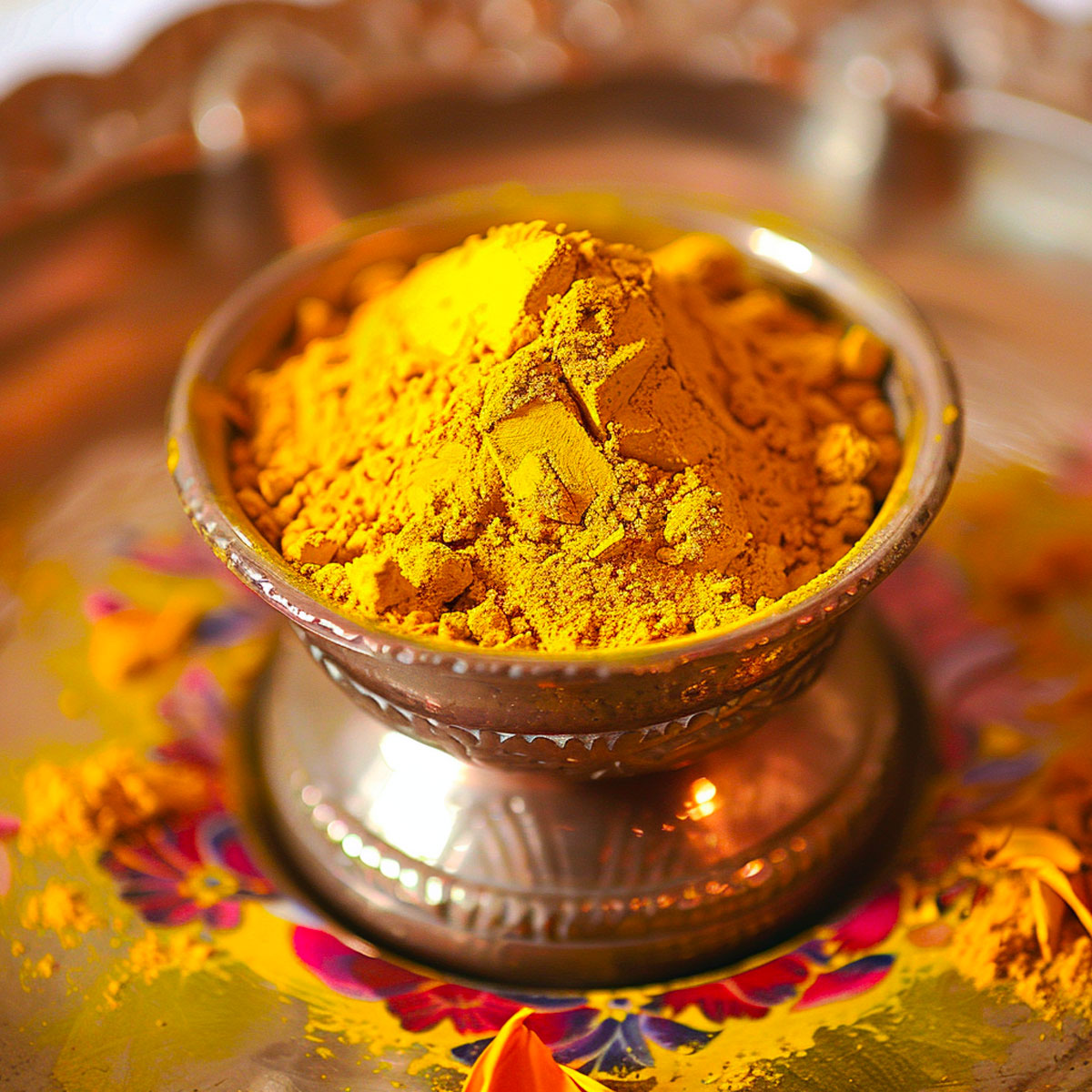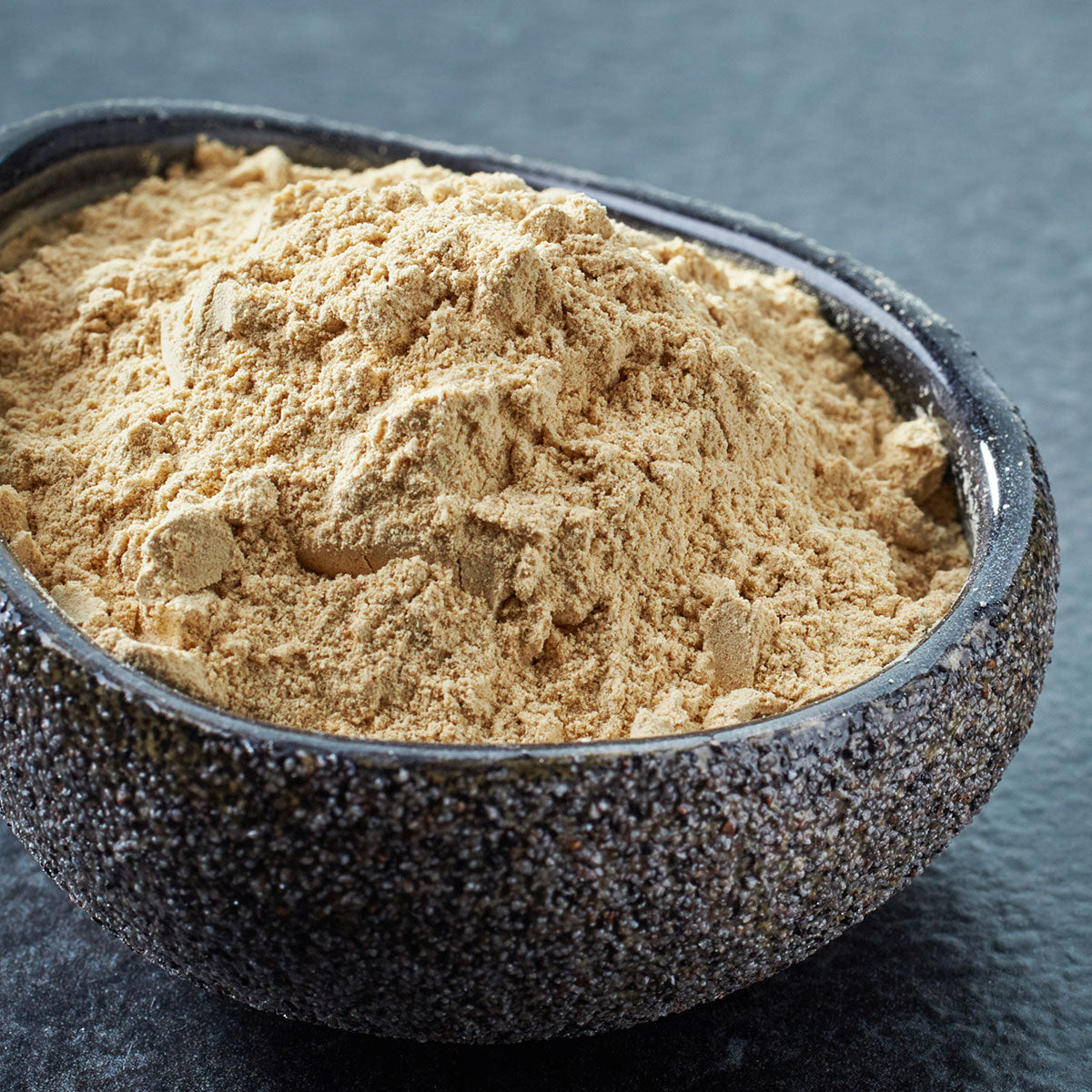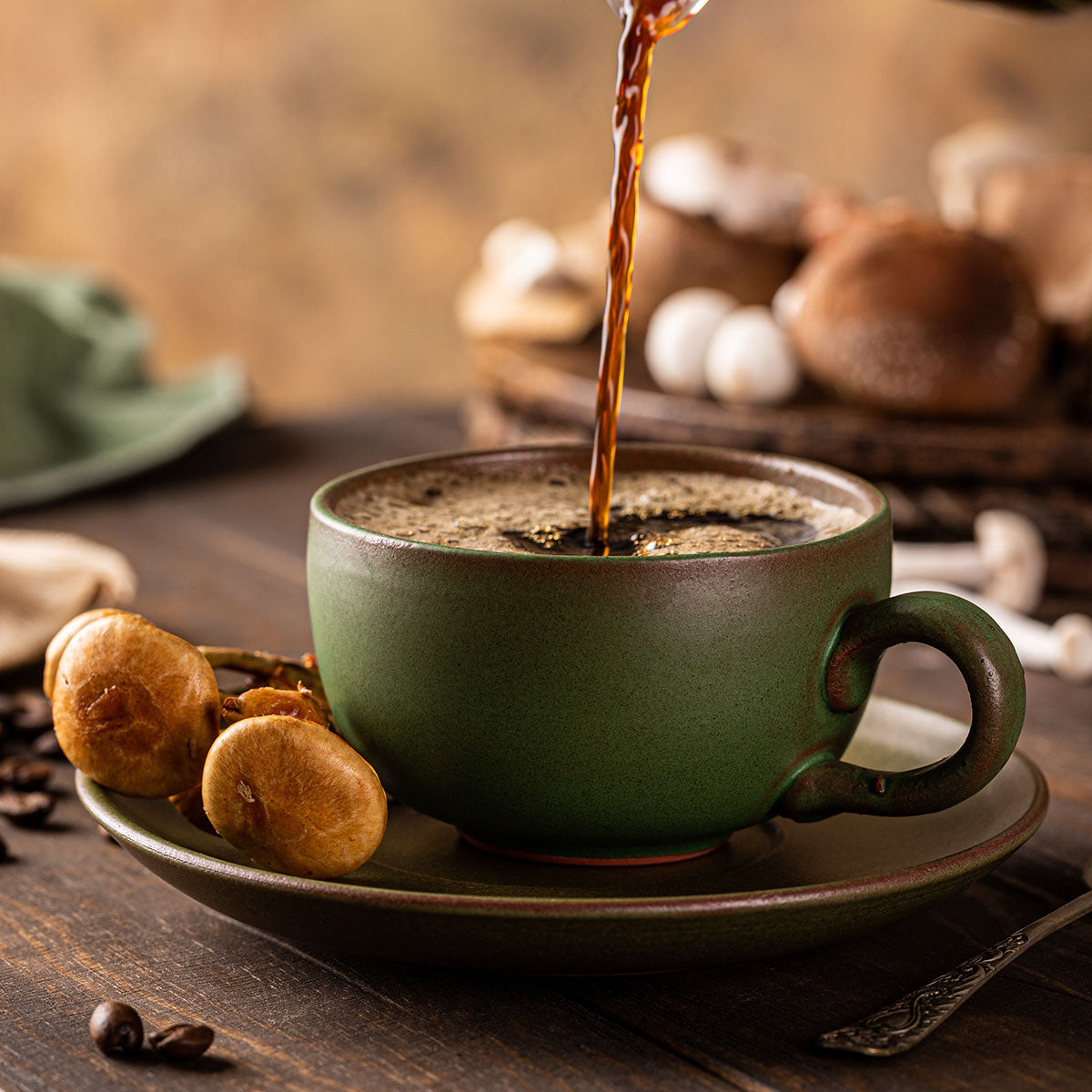Tired of feeling heavy, bloated and low on energy? Give your tummy a helping hand with these 5 brilliant natural helpers (that have no side effects).

Have you been living on a serene island away from any industry since you were born? Sadly, we haven’t either - in that case, our guts have most likely been somewhat beaten up by now. Moreover if you live in an industrialized country, you are likely to have been consuming some form of processed foods (that can be found everywhere!). Not only do they contain synthetic toxins but in many cases also harbor natural toxins such as those that come from molds.
As the gut is increasingly harmed, it becomes harder and harder for it to absorb the essential nutrients we so desperately need. This leads to nutrient deficiencies. You get the picture… it’s a negative loop cycle spiraling our health into disarray.
But, how can we get things back on track?
The great news is you can take control of the madness. If you have already excluded all processed foods and drinks out of your diet (and are no longer relying on eating out) - great! Now it’s time to start nurturing your digestive tract. Include some powerful natural foods in your diet that will help your gut (and you!) become stronger and absorb more nutrients.
Here are our top 5 natural foods to get you started:
-
APPLE CIDER VINEGAR
Ever heard the story of Paul Bragg? Born at the end of 19th century, he lead an extraordinarily healthy life passing away in an accident at the age of 81… surfing!! Wouldn’t we all want the vitality and energy to surf through our lives into and beyond our 80s? What was his secret? You guessed it… apple cider vinegar.
There are so many heath benefits of apple cider vinegar but we’ll focus on digestion here to stay on theme. Apple cider vinegar can help increase your stomach acidity, which will greatly boost your digestion. Many people today suffer from low stomach acid – this acid is what breaks down the food when it enters the stomach and protects us from invading bacteria and pathogens.
How to take apple cider vinegar?
Start with having 1 teaspoon of apple cider vinegar mixed in a glass of water half an hour before each meal. Slowly increase to 1 tablespoon over time. You can also add apple cider vinegar to your salad dressings and stock.
*note: you might feel your stomach heating up almost immediately after this but don’t worry. That’s just a sign ‘the oven is on’ and ready to rock n roll.
-
BITTER DROPS
Out of the 5 tastes, bitter is the least experienced in our diets – most people just don’t like the sharpness of it. We also happen to be the most sensitive to this particular taste. Scientists have speculated that this is probably down to the fact that most poisonous plants in nature are in fact bitter and we’ve developed a heightened sensitivity and dislike to it for that very reason.
Bitters have also been recognized across cultures for their digestive functions: from Holland where they celebrate the ‘bitter hour’ to India - where it is said that those with weak livers seek bitter tasting foods. You’ve probably heard of bitter drinks taken before meals called apéritifs and after dinner digestifs.
So bitters have been a part of many cultures, but how do they exactly help with digestion?
When we recognize a bitter taste, our body reacts with a reflex releasing the hormone gastrin, stimulating the digestive system to wake up and get ready. This leads to an increase in hydrochloric acid production in the stomach, an increase in saliva in the mouth and many other reactions conducive for digesting food.
How to take bitters?
- Bitter greens: include chicory, dandelion, arugula for example in your salads.
- Bitter tinctures: drip some bitter drops into a small amount of water before meals. Swedish bitters are easily found at your local health store. They’re based on a traditional blend of herbs created by the physician Paracelsus in the sixteenth century.
-
SLIPPERY ELM BARK
The inner bark of the Slippery Elm tree has been used as a herbal remedy for centuries by the Native Americans. They took it orally for a number of benefits, especially to relieve diarrhoea and stomach problems.
As per the University of Maryland Medical Center, it soothes the mouth, throat, stomach, and intestines, and contains antioxidants that can help address inflammatory bowel conditions. It stimulates nerve endings in the gastrointestinal tract leading to increased mucus secretion that may even protect your gut against ulcers and excess acidity.
How to take it?
- Tea: 1 cup boiling water with 2g (approx. 1 tablespoons) of powdered bark. Have 3 times per day if taking therapeutically*.
-
Capsules: Doses may vary between producers so check the label. Therapeutically have 400-500mg 3-4 times daily for 4-8 weeks*.
* as recommended by the University of Maryland Medical Center.
-
CHLORELLA
Chlorella has been around for billions of years - since the earliest flourishes in life’s history on our planet. This powerful, yet tiny, single celled micro-algae has been used by many ancient civilizations across the world for its health boosting properties.
Sluggish digestion and metabolism can be down to the build-up of nasties and the clogging of elimination organs such as the liver and kidneys. Chlorella has been shown to bind to these toxins (such as heavy metals) and help flush them out of your system. Lessen the toxic burden and you could kick start your digestive system into gear once again.
Chlorella has also been shown to increase beneficial gut bacteria in your gut, which in turn can help eliminate bad breath and decrease issues such as constipation. It can increase the likes of Lactobacillus (the good bacteria) helping to crowd out non-beneficial and potentially pathogenic bacteria. A healthy balance of the gut microbiome (the bacterial world inside you) leads to improved digestion as these little guys help with breaking down nutrients and therefore increase their absorption.
How to take it?
- Organic Burst Chlorella Tablets: 1 serving = 4 tablets: this is great as a quick morning ritual before shooting out of the house, or if you’re travelling.
- Organic Burst Chlorella Powder: 1 serving = 1 teaspoon. Take with purified water and some fresh lemon juice or super-charge your smoothies / juices. You could even try getting creative and making some Raw Chlorella Chocolates or Chlorella Ice Cream. Check out OB Life > Recipes for more ideas.
-
CHIA SEEDS
Chia has been a staple food for Central and South American ancient civilizations – valued so highly for its health benefits, they would even offer it to their gods in sacred rituals.
A major contributor to our digestive problems today is over-eating. There is only so much digestive juice and enzymes our body can produce and secrete. When we eat too much, the undigested food passes through our tract and can cause bloating and the growth of pathogenic bacteria. If our stomachs are overloaded this can also cause acid reflux – more commonly called heartburn.
Chia to the rescue! A 2010 study in the European Journal of Clinical Nutrition showed that including chia as an ingredient in your meals can reduce cravings and hence prevent over-eating. It will leave you feeling fuller for longer. Chia is also highly hydrophilic, meaning it absorbs liquids very well – this creates a gel-like substance around each seed that will sooth your gastrointestinal tract.
Chia has very little flavor and can therefore be added to almost any food or recipe. It is gluten-free, high in omega-3, fiber and protein.
How to take Chia?
Have 1 teaspoon to 1 tablespoon per day. Why not try one of our delicious Organic Burst Chia recipes from OB Life >
A BONUS TIP
Lighten your meal quantities. Eat only up to feeling 80% full and you’ll avoid over-eating.
MAKE THE DECISION TODAY TO LOOK AFTER YOUR GUT
So there we have it – 5 foods, all natural with no side effects, yet powerful digestive helpers. Make a commitment right now to start at the very least one of the above suggestions and you’ll reap the rewards of a healthier gut and a happier life.
We’d love to hear from you. What are your tried and tested digestive helpers? Have you benefitted from any of the above foods? If so what’s your favorite way of taking them? Share your own tips and experiences with the Burster community by commenting below.
REFERENCES:
Reduction in postprandial glucose excursion and prolongation of satiety: possible explanation of the long-term effects of whole grain Salba (Salvia Hispanica L.).
Eur J Clin Nutr. 2010 Apr ;64(4):436-8. Epub 2010 Jan 20. PMID: 20087375
Authors: V Vuksan, A L Jenkins, A G Dias, A S Lee, E Jovanovski, A L Rogovik, A Hanna
Bitter taste receptors and human bitter taste perception
Cellular and Molecular Life Sciences, 63 (2006) 1501–1509
Authors: M Behrens, W Meyerhof
Principles and Practice of Phytotherapy.
Churchill Livingstone, 2000
Authors: S Mills, K Bone.
The Science and Practice of Herbal Medicine
Healing Arts, 2003
Author: David Hoffmann
Phytochemistry and Pharmacy for Practitioners of Botanical Medicine
Healing Mountain Publishing, 2003
Author: Eric Yarnell.
The Bitter Remedy
The European Journal of Herbal Medicine. 6(2):28-33
Author: JM Waler





